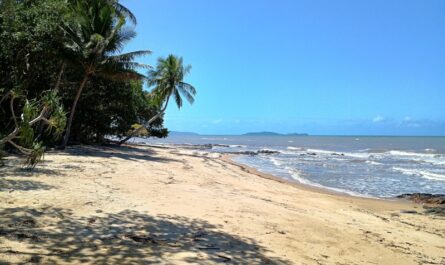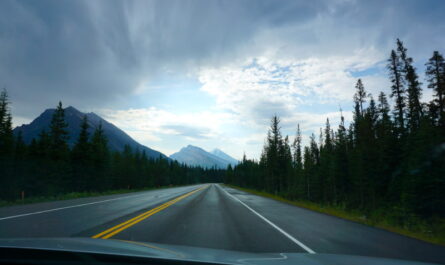This informal greeting of the Māori, the first settlers in New Zealand, is used to greet or say goodbye, but can also be used as an expression of thanks. Translated, it means something like “be well”.
21/01 – 02/02/2023
An unspectacular flight was followed by the nerve-wracking search for a bus ticket to the accommodation. You can only buy single tickets for the train in Auckland, otherwise you need a prepaid card. Fortunately, a shop at the airport also sells these.
The day after the next, we took the train to the city centre of Auckland, New Zealand’s most populous city with around 1.4 million inhabitants.



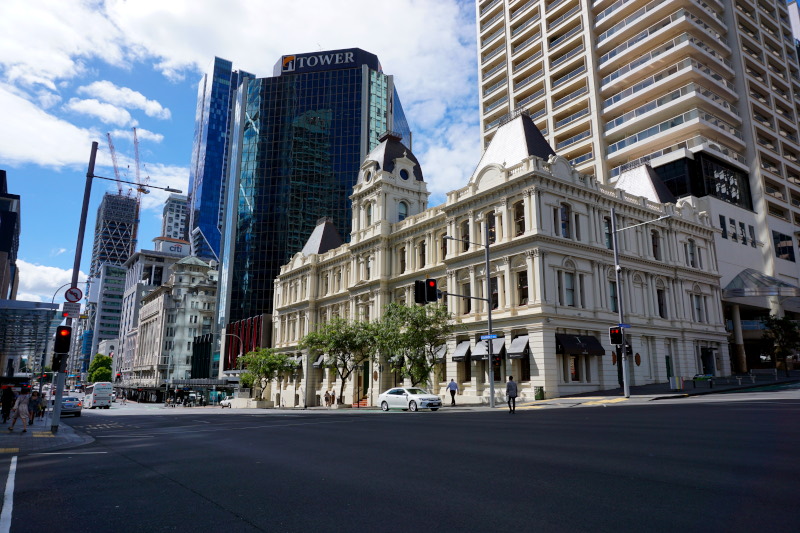



Now we could pick up the camper and start exploring the North Island. Before that, however, we stocked up on a small supply (you don’t want to have to go shopping every day). Unfortunately, we discovered on the way that the vehicle’s water tank was leaking. So we went back to the pick-up station. Fortunately, after half an hour the problem was solved and we even got a quarter of the daily rate refunded.
We then spent the first few days in the area north of Auckland.





The following day we stopped in Opononi at the Koutu Boulders. These round stones are excellent examples of concretions. These are gradual deposits of sedimentary rock around points of crystallisation. (For those who have never heard of them before, we felt the same way. 🙂 ) We then drove on to the Rainbow Falls in Kerikeri. Due to the heavy rainfall in January, the rainiest month on record in New Zealand’s North Island, huge amounts of water fell down here. We also visited “The Stone Store” in town, the oldest preserved stone building in New Zealand. It is made of local volcanic rock and Sydney sandstone, held together by mortar made from burnt shells. Just behind it, the “Kemp House” is also the oldest wooden house in the country. And just a stone’s throw away are the clearly visible traces of a former Pā of the Māori. This is a kind of fortified village that was built in a strategically important position (here on the lower course of the river, shortly before reaching the Pacific Ocean).






Around Whangarei we visited the Abbey Caves. Three limestone caves, which unfortunately could not be entered without professional equipment due to the rain of the previous days. This was followed by stops at Paranui Falls and Whangarei Falls. These two waterfalls are also particularly powerful at the moment and make you feel the power of the water even more clearly than usual.






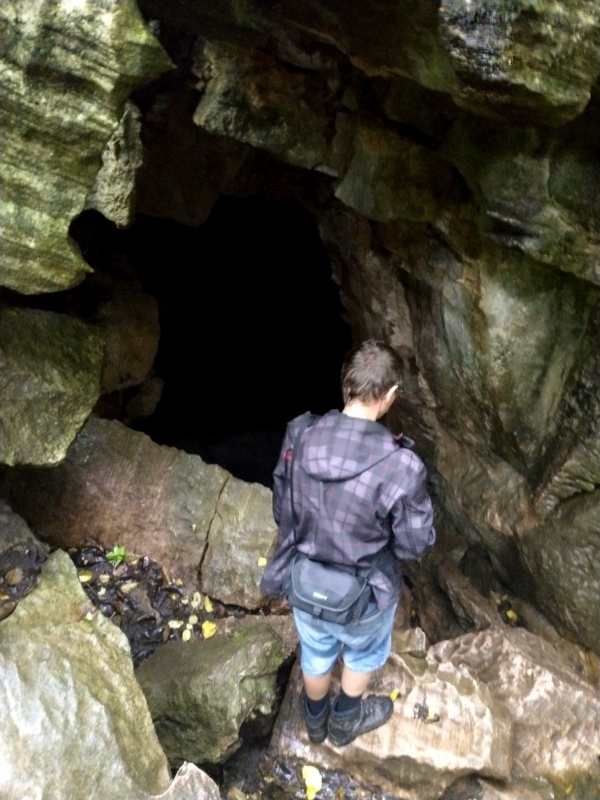



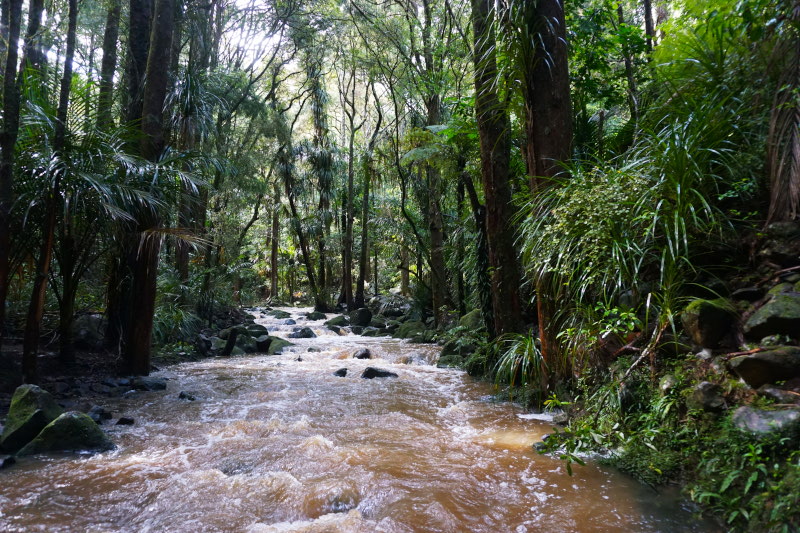
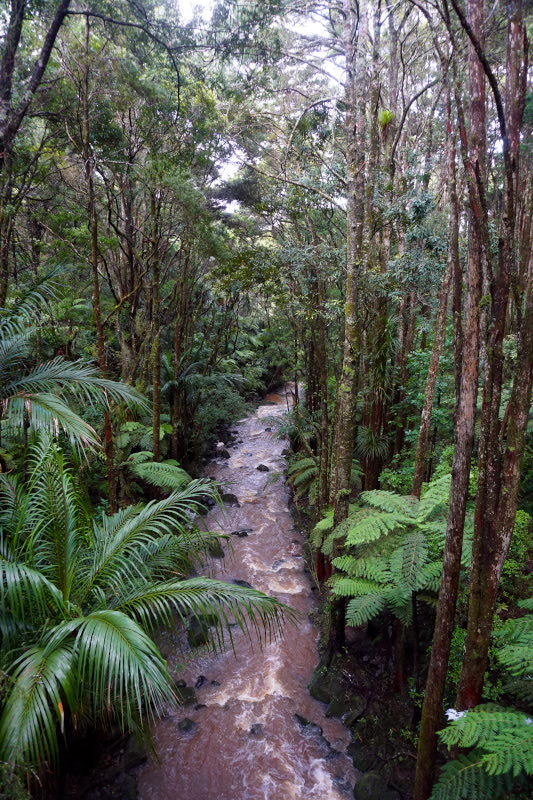
The next morning (before breakfast) we “explored” the Waipu Caves. The entrance to this stalactite cave was actually right in front of our campsite door, as you are allowed to stay overnight in the associated car park free of charge. This early in the day, you have the cave to yourself and can look at the glowworms living there on the ceiling in peace. Unlike other species, the New Zealand firefly glows to catch prey. Therefore, it imitates the starry sky together with other members of its species.





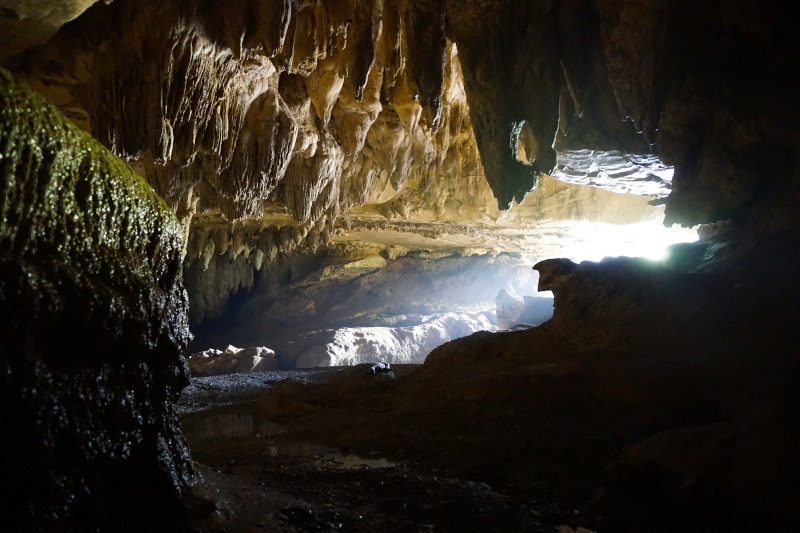
That was the end of our excursion to the north and our way led us through Auckland again. Not surprisingly, the city is located at the narrowest point of the North Island.
At the Waikato Museum in Hamilton, we were able to admire a waka taua, a Māori war canoe, and learn about the history of the landing of the local Māori tribe.
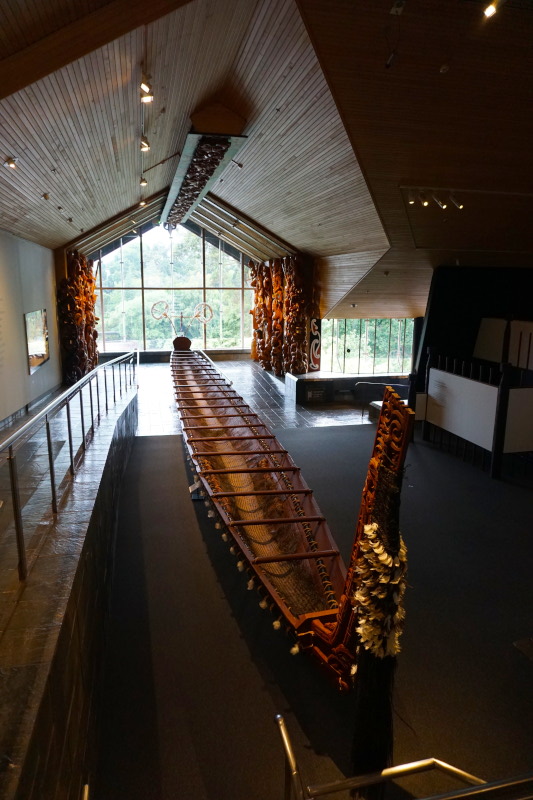








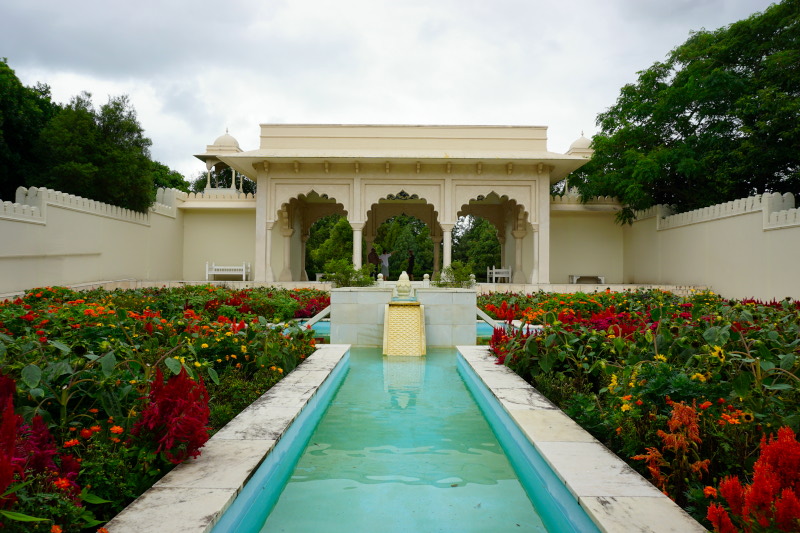











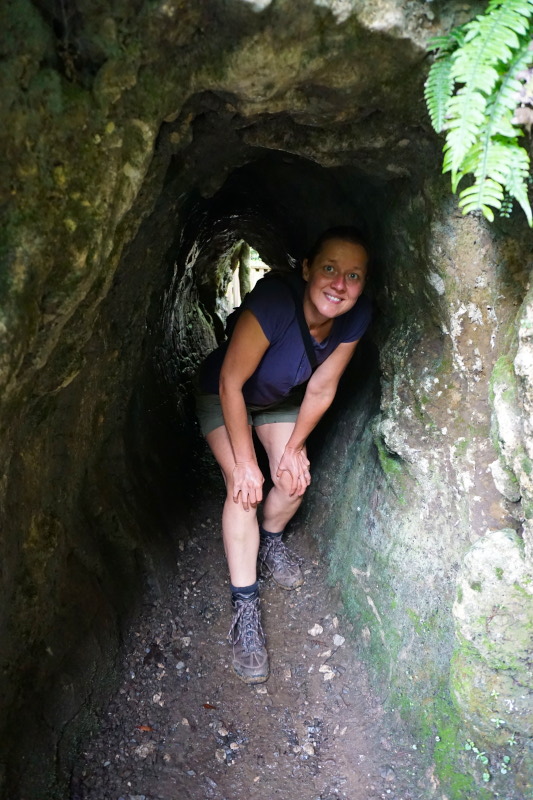





These were our first experiences from the furthest place accessible from Germany. See you soon.











